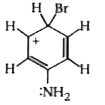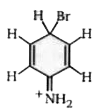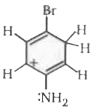From the point of evolutionary complexity, which one of the following is most advanced?
Chlamydomonas
Funaria
Selaginella
Pinus
The correct Answer is:D
To determine which organism is the most advanced from the point of evolutionary complexity, we need to analyze the given options based on their classification and evolutionary traits.
1. Identify the Organisms and Their Classifications:
- Chlamydomonas: This is a unicellular green alga belonging to the group of algae.
- Funeria: This is a moss, which belongs to the group Bryophyta (mosses).
- Lycopodium: This is a clubmoss and belongs to the group Pteridophyta (ferns and their relatives).
- Pinus: This is a pine tree, which belongs to the group Gymnosperms (cone-bearing plants).
2. Understand the Evolutionary Complexity:
- Algae (Chlamydomonas): These are the simplest forms of plant life, primarily aquatic and lack complex structures.
- Bryophyta (Funeria): Mosses show some differentiation in structure but still lack vascular tissues.
- Pteridophyta (Lycopodium): Ferns and clubmosses have vascular tissues, allowing for more complex structures and growth forms.
- Gymnosperms (Pinus): These plants have seeds, which provide a significant evolutionary advantage, but the seeds are not enclosed in fruits.
- Angiosperms (not listed): These are the most advanced group of plants, characterized by having seeds enclosed in fruits.
3. Rank the Organisms:
- From least advanced to most advanced:
- Chlamydomonas (Algae) < Funeria (Bryophyta) < Lycopodium (Pteridophyta) < Pinus (Gymnosperm)
4. Conclusion:
- Since the question asks for the most advanced organism among the options provided, and considering that angiosperms are not listed, the most advanced organism from the given options is Pinus, as it represents the Gymnosperms, which are more complex than the other groups listed.
Final Answer:
The most advanced organism from the point of evolutionary complexity is Pinus (option D).
- Chlamydomonas: This is a unicellular green alga belonging to the group of algae.
- Funeria: This is a moss, which belongs to the group Bryophyta (mosses).
- Lycopodium: This is a clubmoss and belongs to the group Pteridophyta (ferns and their relatives).
- Pinus: This is a pine tree, which belongs to the group Gymnosperms (cone-bearing plants).
- Algae (Chlamydomonas): These are the simplest forms of plant life, primarily aquatic and lack complex structures.
- Bryophyta (Funeria): Mosses show some differentiation in structure but still lack vascular tissues.
- Pteridophyta (Lycopodium): Ferns and clubmosses have vascular tissues, allowing for more complex structures and growth forms.
- Gymnosperms (Pinus): These plants have seeds, which provide a significant evolutionary advantage, but the seeds are not enclosed in fruits.
- Angiosperms (not listed): These are the most advanced group of plants, characterized by having seeds enclosed in fruits.
- From least advanced to most advanced:
- Chlamydomonas (Algae) < Funeria (Bryophyta) < Lycopodium (Pteridophyta) < Pinus (Gymnosperm)
- Since the question asks for the most advanced organism among the options provided, and considering that angiosperms are not listed, the most advanced organism from the given options is Pinus, as it represents the Gymnosperms, which are more complex than the other groups listed.
The most advanced organism from the point of evolutionary complexity is Pinus (option D).
Similar Questions
Knowledge Check
Which one of the following is most stable?
A B
B C
C D
D
Which one of the following is most stable?
A B
B C
C D
D
Which one of the following is most stable ?
A B
B C
C D
D
Which one of the following is the most acidic?
View SolutionWhich one of the following is most soluble ?
View Solutionwhich one of the following is the most durable wood ?
View SolutionIn term of evolutionary origin, which one of the following is correct
View SolutionWhich one of the following salt is most acidic in water?
View Solution
